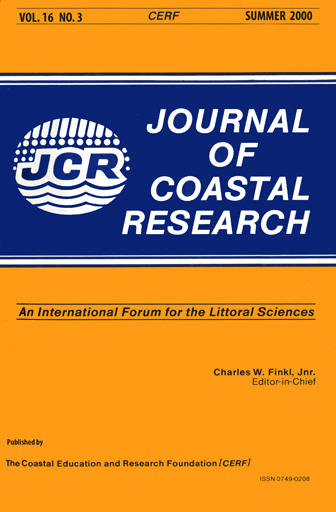Contaminant Distribution and Accumulation in the Surface Sediments of Long Island Sound
Keywords:
Metals, trace metals, major elements, grain size, texture, estuaries, multivariate statisticsAbstract
The distribution of contaminants in surface sediments has been measured and mapped as part of a U.S. Geological Survey study of the sediment quality and dynamics of Long Island Sound. Surface samples from 219 stations were analyzed for trace (Ag, Ba, Cd, Cr, Cu, Hg, Ni, Pb, V, Zn and Zr) and major (AI, Fe, Mn, Ca, and Ti) elements, grain size, and Clostridium perfringens spores. Principal Components Analysis was used to identify metals that may co-vary as a function of common sources or geochemistry. The metallic elements generally have higher concentrations in fine-grained deposits, and their transport and depositional patterns mimic those of small particles. Fine-grained particles are remobilized and transported from areas of high bottom energy and deposited in less dynamic regions of the Sound. Metal concentrations in bottom sediments are high in the western part of the Sound and low in the bottom scoured regions of the eastern Sound. The sediment chemistry was compared to model results (SIGNELL et al., 1998) and maps of sedimentary environments (KNEBEL et al., 1999) to better understand the processes responsible for contaminant distribution across the Sound. Metal concentrations were normalized to grain-size and the resulting ratios are uniform in the depositional basins of the Sound and show residual signals in the eastern end as well as in some local areas. The preferential transport of fine-grained material from regions of high bottom stress is probably the dominant factor controlling the metal concentrations in different regions of Long Island Sound. This physical redistribution has implications for environmental management in the region.


